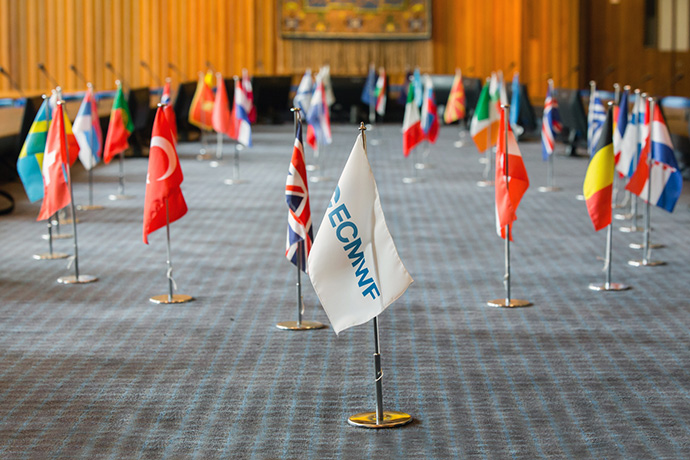
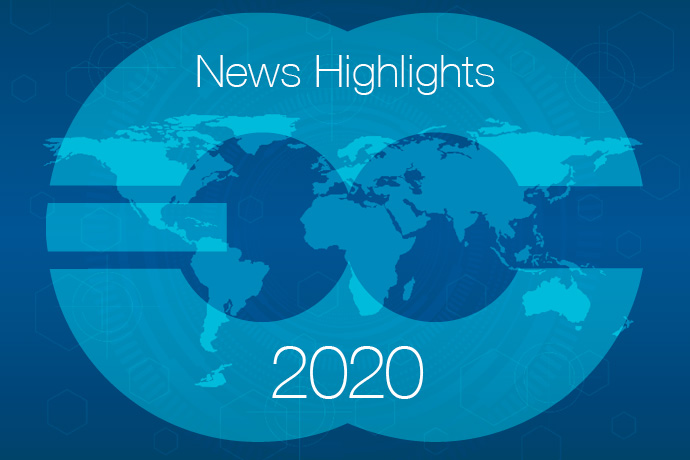
ECMWF news highlights of 2020 include an upgrade of ECMWF’s Integrated Forecasting System; a new supercomputer contract; projects and workshops to drive forward weather science; updates on the EU-funded Copernicus services implemented by ECMWF; and new offices to be located in Bonn.
Better forecasts
In June, a wide-ranging upgrade of ECMWF’s Integrated Forecasting System (IFS) improved global weather forecasts and substantially improved analyses and forecasts in the stratosphere. The upgrade to IFS Cycle 47r1 brought many changes in data assimilation and Earth system modelling.
For example, a change in the model reduced numerical errors accumulating at high horizontal resolution due to insufficient vertical resolution in the stratosphere. This was achieved by moving from third-order (cubic) to fifth-order (quintic) vertical interpolation.
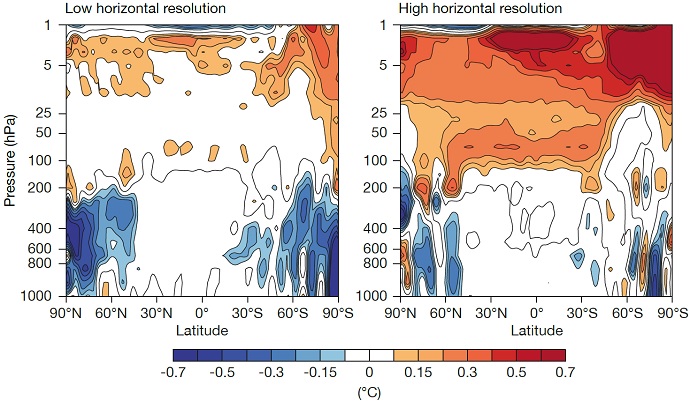
These plots show differences in zonally (latitudinally) averaged temperature between quintic and cubic vertical interpolation forecasts at a grid spacing of about 79 km (left) and about 9 km (right). The plots show that quintic vertical interpolation warms the stratosphere more at high horizontal resolution, thus reducing the cold bias at that resolution. Mean values over 31 forecasts starting in July 2017 and valid at day 10 are shown.
New output data in IFS Cycle 47r1 include a tropical cyclone wind radii product, which will facilitate the identification of wind-related hazards.
The chart shows an HRES wind radii forecast (IFS Cycle 47r1) for the 34-knot wind threshold up to 240 hours ahead, initialised at 12 UTC on 30 August 2019. The red dots indicate the predicted centre of Hurricane Dorian at 12-hour intervals.
On 9 January 2020, ECMWF started assimilating wind data from the European Space Agency's Aeolus satellite operationally after tests showed that they significantly improve weather forecasts.
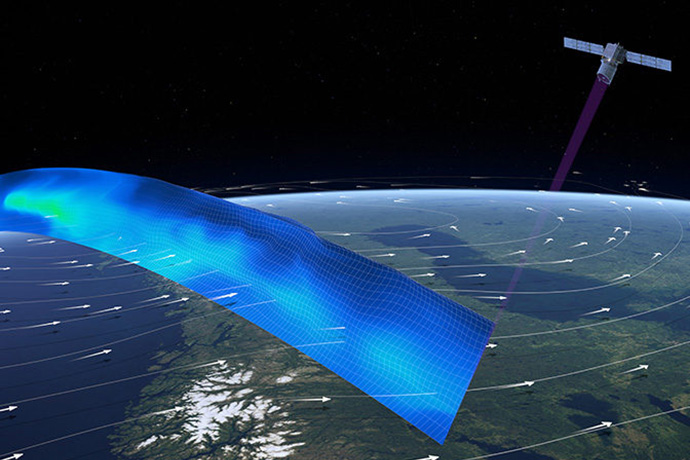
Aeolus is a polar-orbiting satellite which sends laser light into the atmosphere and measures the backscatter to obtain information on winds in the direction perpendicular to the satellite’s path. (Image: ESA/ATG Medialab)
ECMWF users were updated on all these developments and more during this year’s Using ECMWF’s Forecasts event (UEF2020) from 1 to 4 June 2020. The meeting, held virtually because of COVID-19, attracted 227 people from 43 countries.

The theme of UEF2020 was ‘Keeping users at the heart of operations’.
Earth system observations
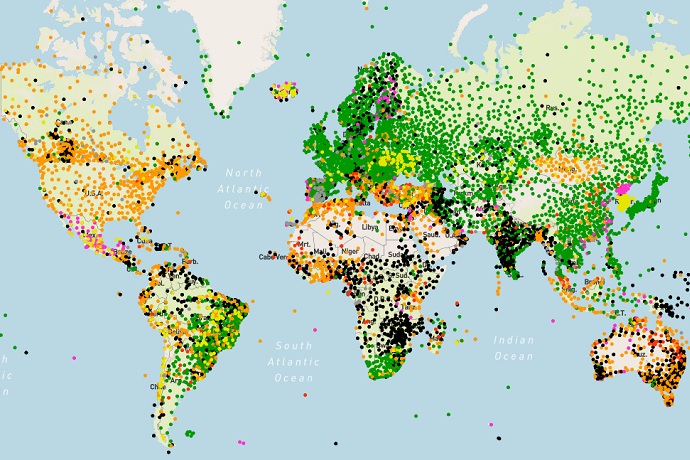
Six-hour WDQMS land-surface observation availability map on 8 March 2020 (green means fully reporting).
In March, the World Meteorological Organization (WMO) and ECMWF launched a new web-based interface to help monitor the availability and quality of global meteorological observations.
A coordinated response involving EUMETNET, national meteorological services and private companies helped to mitigate any adverse effects of the loss of aircraft-based observations on weather forecasts after a sharp drop in flights due the COVID-19 pandemic.
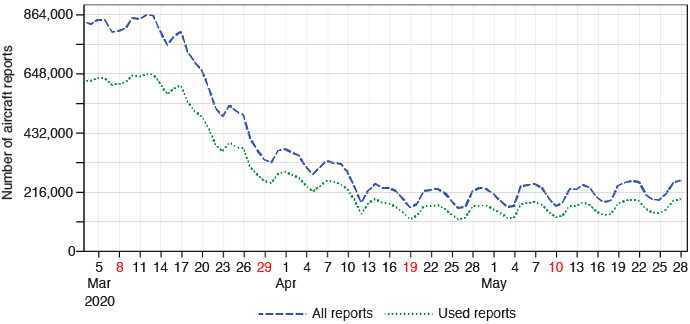
Numbers of global aircraft reports received at ECMWF per day. The regular dips reflect reductions in the numbers at weekends. There is some thinning and a small proportion of rejections so that the number assimilated (green) is less than the number received (blue). Most reports are received as part of the WMO’s Aircraft Meteorological Data Relay (AMDAR) programme.
Driving forward weather science
At the start of 2020, a group of ECMWF scientists embarked upon a project to carry out ground-breaking global weather and climate simulations at 1 km resolution after they were awarded time on the Summit supercomputer at the Oak Ridge National Laboratory in the US. The award is one of 47 made by the US INCITE programme for 2020 after a highly competitive selection process.
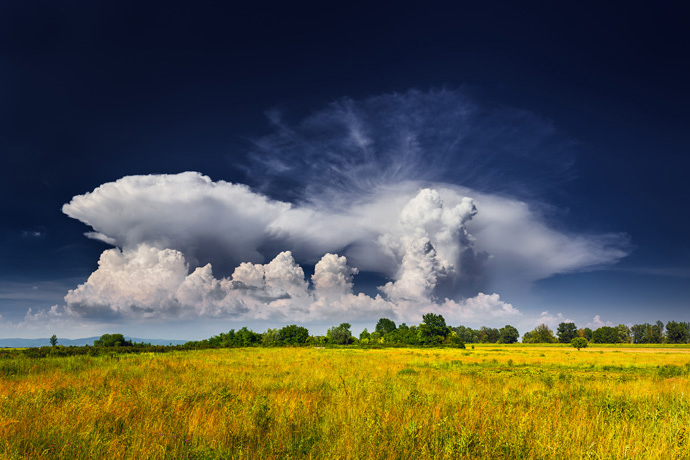
The US Incite project will make it possible to simulate deep convection explicitly at the global scale. (Photo: Ivica Brlić, WMO 2018 Calendar, CC BY-NC-ND 2.0)
ECMWF also signed a four-year contract worth over 80 million euros with Atos for the supply of its BullSequana XH2000 supercomputer. In October, ECMWF and Atos launched a Center of Excellence in HPC, AI, and Quantum Computing for Weather & Climate to support ECMWF scientists in their work on medium- and long-range weather prediction and global climate modelling.
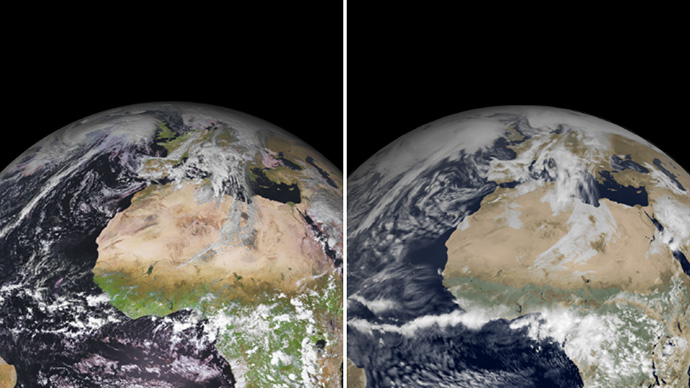
Visible Meteosat Second Generation (MSG) satellite image (left) next to a 48-hour global forecast with a grid spacing of 1.4 km and an explicit representation of deep convection, verifying at the same time (right). Simulations with this high level of detail will help to advance the understanding of the Earth's weather and climate. (Image courtesy of EUMETSAT/ECMWF)
In March, ECMWF brought together over 100 experts in a virtual workshop to discuss how the latest research on a type of air flow known as warm conveyor belts can help to improve weather forecasts.
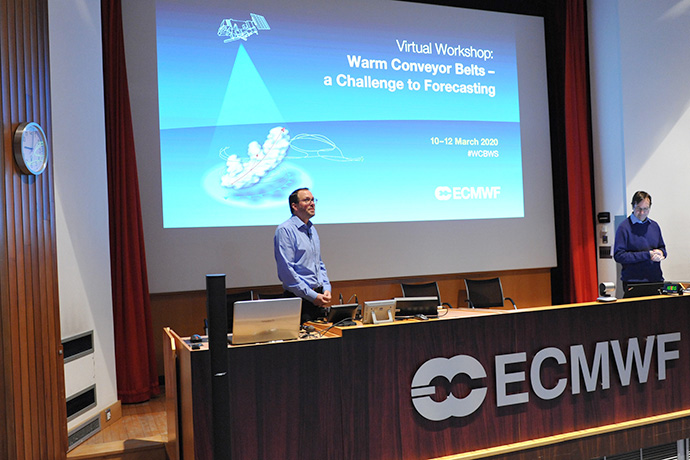
ECMWF Director of Forecasts Florian Pappenberger (left) opened the workshop, which external participants attended remotely because of the COVID-19 pandemic.
On 7 October 2020, hundreds of ECMWF forecast charts became free and accessible to all.
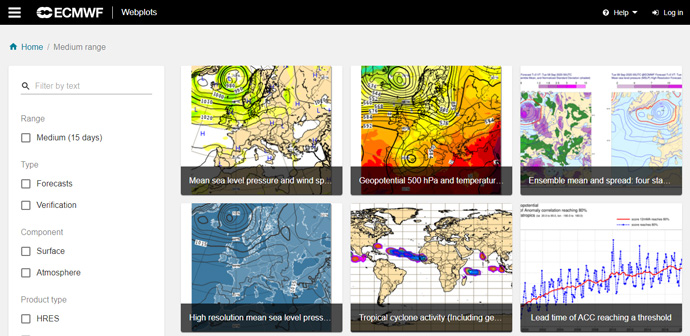
Forecast charts cover all regions of the world; the figure shows just a selection of the hundreds that are being made available.
In November, almost 200 experts from around the world joined an online workshop on the treatment of random and systematic errors in satellite data assimilation for numerical weather prediction (NWP), organised by ECMWF and the NWP SAF.
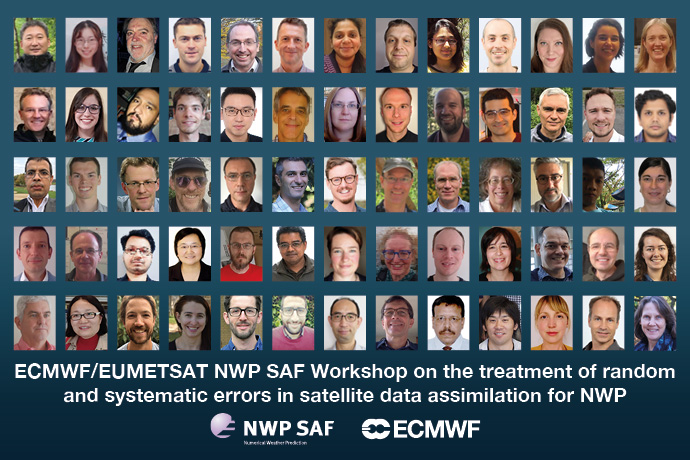
After the fellowship terms for ECMWF’s first three Fellows came to an end, seven highly respected scientists from Europe and the United States have accepted invitations to become ECMWF Fellows from 1 January 2021.

Image: iLexx/Stock/Getty Images Plus
ECMWF has also been involved in Destination Earth, an initiative led by the European Commission to develop a very high precision digital model of the Earth that also includes EUMETSAT and ESA.
ECMWF’s role in Copernicus services
In October, ECMWF helped to deliver a major upgrade to the European Flood Awareness System (EFAS) that brought a step change in resolution. EFAS is produced by ECMWF as part of the Copernicus Emergency Management Service (CEMS).
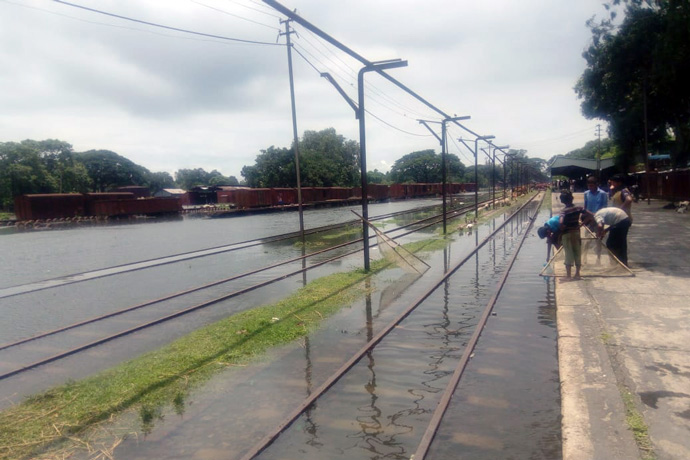
Photo: Abdul Manna
In April, a detailed report on the state of the European climate, released by the EU-funded Copernicus Climate Change Service (C3S) implemented by ECMWF, confirmed that 2019 was the warmest year on record, continuing a trend that means 11 of the 12 warmest years in Europe have occurred since 2000.
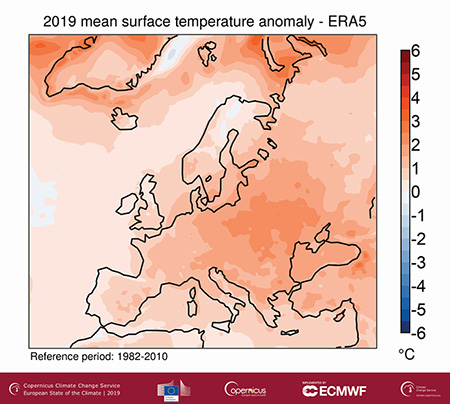
Mean surface air temperature anomalies for 2019 according to ECMWF’s ERA5 reanalysis. Nearly all of Europe was warmer than the long-term average.
The global forecasting system of the Copernicus Atmosphere Monitoring Service (CAMS), also implemented by ECMWF, was successfully upgraded on 6 October 2020, leading to improved forecasts of sea salt and dust aerosol, particulate matter and stratospheric ozone.
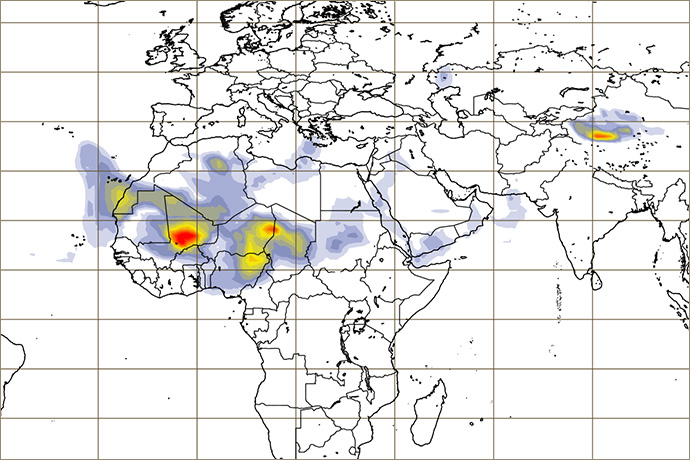
Example from dust aerosol optical depth at 550 nm forecast provided by CAMS.
Corporate news
Whilst ECMWF headquarters are remaining in the UK, new offices to be located in Bonn, Germany, and with a focus on activities that ECMWF conducts in partnership with the EU, will start to welcome staff around summer 2021.
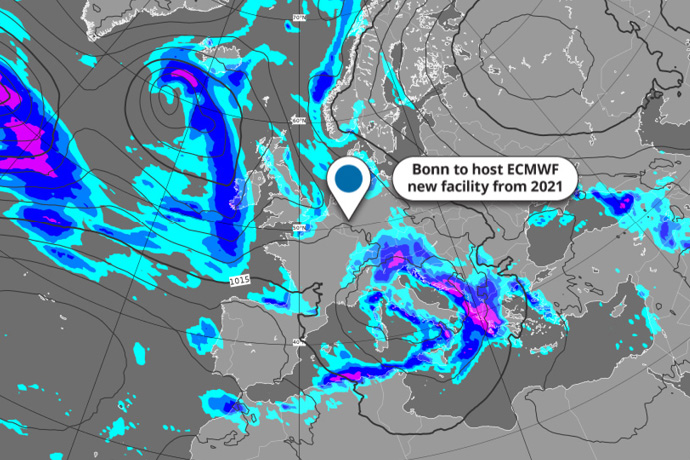
On 1 December 2020, Estonia officially joined the other 22 Member States of ECMWF. The Centre's Director-General, Dr Florence Rabier, welcomed Estonia's accession to full membership, saying that this new phase will make the collaboration between ECMWF and Estonia stronger and even more vibrant.
